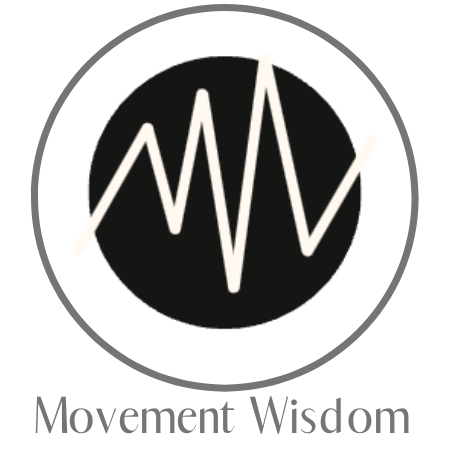If you are highly creative but easily distracted, flexible and adaptable but sometimes irritable and anxious, you likely have a Vata Dosha constitution. Practicing Yoga for Vata dosha can help to rebalance excessive Vata, allowing us to access more of its incredible strengths.
Like all three Ayurvedic doshas, Vata has both strengths and weaknesses. The more out of balance our vata dosha becomes, the more these weaknesses appear.
So what exactly is the Vata dosha, and how does yoga impact it? Let's find out.
Article content:
(Click any link below to jump directly to section)
What is Vata dosha?
The Vata dosha is associated with the air and space (ether) elements. This dosha is described as cold, light, dry, flowing, and spacious, resembling its related elements.
Its primary purpose is to govern movement and communication within the body.
When our Vata dosha is balanced, we feel light, spacious, creative, and energized. Our mind is clear, energy flows through us freely, and we can easily navigate the ebbs and flows of life.
Vata is one of the three Ayurvedic doshas. Although they are not personality types, doshas help us understand our strengths and weaknesses and our body's needs. The three doshas are:
Together, all three doshas contain a balance of the five Ayurvedic elements of the world:
- Air
- Earth
- Space
- Water
- Fire

Benefits of yoga for Vata dosha
Yoga's calming properties are an excellent antidote to the restlessness, anxiety, and insomnia that come with a Vata dosha imbalance.
Yoga helps to slow down the activity in the brain, reducing repetitive thoughts and feelings of overwhelm.
Physically, yoga postures such as twists and core work help to relieve any digestive issues caused by Vata dosha imbalance, such as constipation.
Yoga for Vata dosha also improves blood circulation and the functioning of the respiratory system. So you might notice yoga helps to ease symptoms like cold hands and feet and shortness of breath. Here are some other ways practicing yoga can benefit Vata dosha:
- Calmes the nervous system – Gentle and grounding yoga poses help soothe Vata's tendency toward anxiety and restlessness.
- Improves circulation – Slow, steady movements enhance blood flow and reduce coldness associated with Vata.
- Promotes stability – Poses that emphasize balance and strength counteract Vata's instability.
- Enhances flexibility – Gentle stretches maintain flexibility without overextending, which can aggravate Vata.
- Balances energy – Breathing techniques (Pranayama) stabilize Vata's erratic energy levels.
5 yoga poses for Vata dosha
As the Vata dosha is characterized as mobile and expansive, grounding yoga poses are best for bringing it back into balance.
You should opt for Hatha, Iyengar, and Restorative yoga over dynamic styles like Vinyasa and Power Yoga.
A few rounds of sun salutations are ok, but it is best to move through them slowly. Standing postures, twists, forward bends, and calming inversions are all great choices. Here are five poses that balance Vata dosha:
1. Tree pose
Tree pose, also called Vrksasana, is one of the most grounding asanas, allowing you to connect to your roots and call upon the Earth's energy to stabilize you.
What's more, balancing on one leg requires strong engagement from the leg, hip, and core muscles, which warms the body and improves blood flow. This shifts your attention away from your mind and into your lower body, making you feel more composed and balanced. Here's how to do Tree pose:
- From a standing position (Tadasana), shift your weight into your right leg.
- Lift your left heel off the ground, turning the toes out to the side and resting the heel on your right ankle.
- Stay here or slide your left foot up your right leg, resting it on the calf or thigh.
- Ensure your hips are facing forward and root firmly into the right food.
- Focus your gaze on one point directly in front of you.
- Bring your hands into a prayer position at the heart center or reach them overhead.
- Hold for 5 – 10 breaths, release, and practice the posture on the other side.

2. Cobra pose
The prone backbend Cobra pose, also called Bhujangasana, connects your body to the ground, increasing the earth element. Meanwhile, as you lift the chest off the floor, the internal organs compress. This action stimulates digestion and eases symptoms like constipation. Here's how to do Cobra pose:
- Lay on your front with your hands under your shoulders and feet together.
- Press your hip bones into the ground and engage your lower back muscles to lift your chest off the floor.
- Press lightly into your hands as you do, but ensure the lift comes from the back muscles.
- Hug your elbows into your chest, look forward, and hold for a few breaths before lowering back down.

3. Standing forward fold
Forward folds like Uttanasana compress and warm the internal organs, improving the functioning of the digestive system.
Moreover, the standing forward fold brings the head below the heart (like in an inversion), pacifying excess vata by calming the nervous system. As a result, this pose is known for relieving headaches and easing anxiety. Here's how to do standing forward fold:
- From a standing position with your feet hip distance apart, bend your knees and round your spine to fold over your thighs.
- From here, press both feet firmly into the ground as you straighten your legs, keeping a soft bend in the knees.
- Keep tilting from the hips, bringing your forehead closer to your shins and chest closer to your thighs.
- Let your arms hang heavy or rest your hands on the ground or a block. Or, for a deeper spinal stretch, wrap your peace fingers around your big toes.
- Hold here for ten breaths, then slowly roll up the spine to release.

4. Bound Angle pose
Bound Angle pose, also called Baddhakonasana, is a grounding asana as you root your sitting bones into the ground, connecting to the earth element. This brings a sense of centering to an overactive vata dosha, literally bringing you back down to earth.
Meanwhile, the hip-opening action can help to release repressed emotions, which could contribute to mood swings and anxiety. Regular practice of hip openers can improve emotional regulation. Here's how to do bound angle pose:
- From a seated position, bend both knees out to the side and bring the soles of your feet together.
- Adjust your feet as needed. The closer your feet are to your body, the more intense the stretch will be on the hips.
- Stay upright with a straight spine, holding onto your feet and energetically pressing your knees down.
- Or, for extra calming properties, fold forward by hinging from the hips. Keep the spine straight as you lower your head towards the ground.
- Hold here for up to 10 breaths.

5. Seated spinal twist
The seated spinal twist also called Ardha Matsyendrasana is one of the best asanas for people with poor digestion due to vata dosha imbalance. The twisting action of this pose compresses the intestinal organs. This stimulates digestion while helping to eliminate toxins from the body.
This pose also has a general warming effect on the body and improves blood circulation. Here's how to do Seated spinal twist:
- From a seated position with your legs outstretched, bend your right knee, bringing the foot to the outside of the left thigh.
- Place your right hand behind your back, fingertips on the ground.
- As you inhale, extend your left arm up. As you exhale, twist your spine to the right, bending your elbow and placing it against the outside of the right knee.
- Take 5 deep breaths here. On each inhale, lengthen the spine. On each exhale, press the elbow gently against the knee to deepen the twist, gazing behind you.
- Release and repeat on the other side (twisting to the left).

⬇Yoga Alliance registered yoga teacher trainings you should look into⬇
Takeaway on yoga for Vata dosha
Yoga and Ayurveda come from the ancient Indian Vedic system of health care. So, both practices naturally complement each other. In particular, Yoga helps to balance our Doshas, keeping all five elements in perfect equilibrium.
If you have a Vata dosha constitution, practice the yoga for Vata dosha postures detailed above. Along with other calming practices, these asanas will help you stay centered, grounded, and spacious.
Some online yoga studios, online yoga teacher training programs, and brands that we write about may offer us a small commission should you decide to make a purchase or signup after reading our content. Thank you for enabling us to exist!











